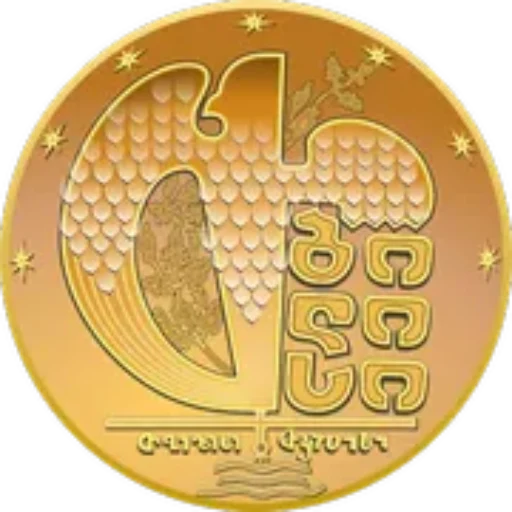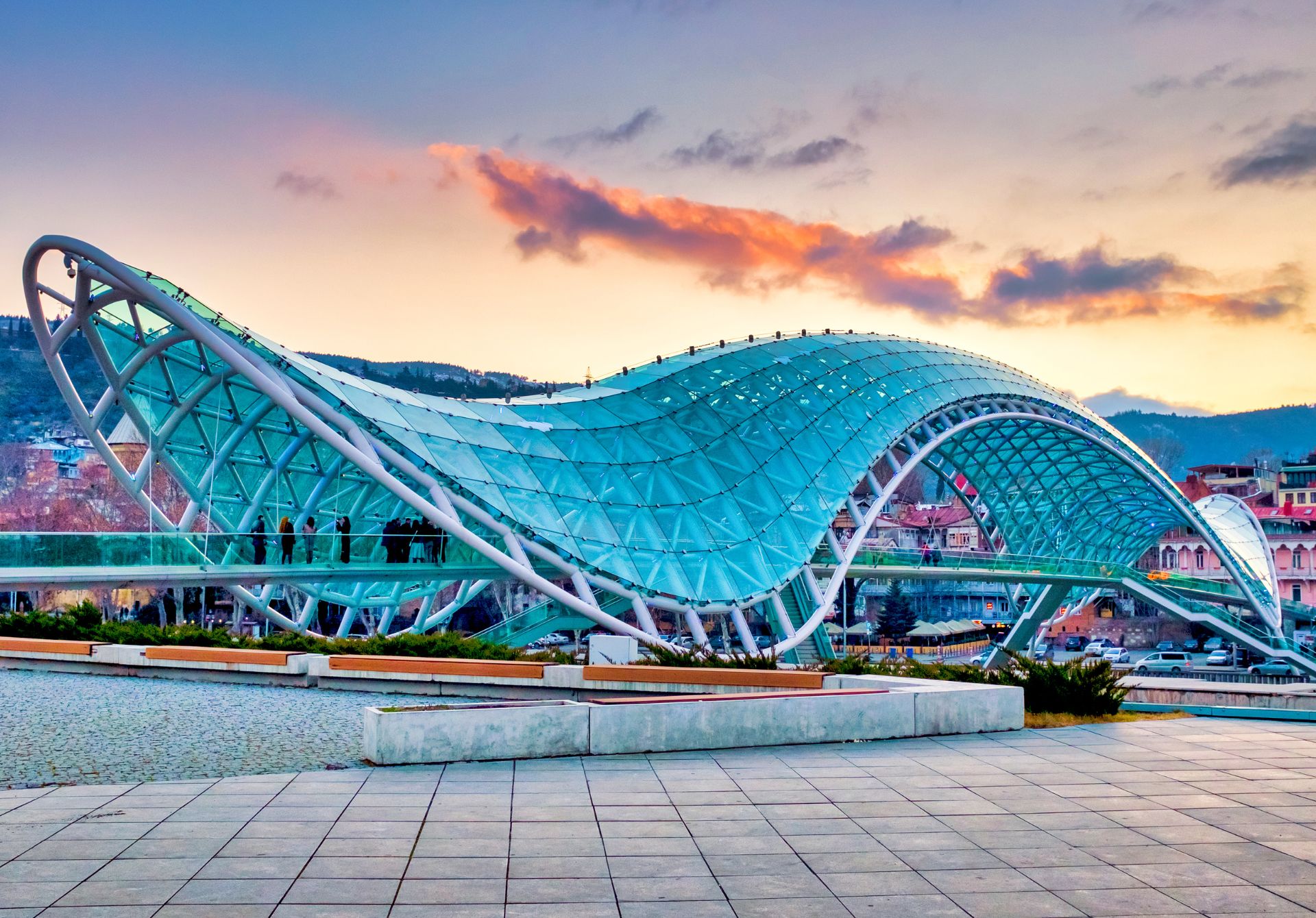In the heart of Tbilisi, Georgia’s capital city, stands a striking piece of modern architecture that has become an emblem of the country’s aspirations for a brighter future. The Bridge of Peace, spanning the Kura River, is not just a functional structure but a symbol of Georgia’s progress and its connection to the world beyond its borders.
A Bridge Between Past and Future
Opened in 2010, the Bridge of Peace represents a bold statement in a city steeped in history. Its futuristic design, crafted by Italian architect Michele De Lucchi, stands in stark contrast to the ancient fortresses and Orthodox churches that dot Tbilisi’s skyline. This juxtaposition of old and new has made the bridge a subject of both admiration and controversy.
Design and Architecture
The bridge’s design is nothing short of spectacular. Stretching 150 meters across the Kura River, its bow-shaped steel and glass construction is supported by a curving steel frame. The canopy is covered with thousands of LED lights, programmed to display an interactive light show every evening. This illuminated spectacle has earned the bridge the nickname “The Always Ultra” among locals, a playful reference to a brand of female hygiene products.
Symbolism and Meaning
Beyond its striking appearance, the Bridge of Peace carries deep symbolism. Its name reflects Georgia’s aspirations for peaceful development and integration with the global community. The structure itself, linking the old town with the new districts of Tbilisi, serves as a metaphor for connecting Georgia’s rich history with its hopes for the future.
Impact on Tbilisi’s Urban Landscape
The introduction of the Bridge of Peace has had a significant impact on Tbilisi’s urban fabric. It has become a catalyst for development in the surrounding areas, spurring the creation of new public spaces and attracting both tourists and locals alike.
Revitalization of the Riverfront
Prior to the bridge’s construction, the banks of the Kura River were largely neglected. The project has breathed new life into this area, transforming it into a vibrant public space. Today, the riverfront is a popular spot for leisure activities, with cafes, restaurants, and recreational areas drawing crowds throughout the day and night.
Boost to Tourism
Since its inauguration, the Bridge of Peace has become one of Tbilisi’s most photographed landmarks. Tourism statistics indicate a significant increase in visitors to the area, with the bridge featuring prominently in marketing materials promoting Tbilisi as a destination. In 2019, Georgia welcomed a record 9.4 million international visitors, with many citing the bridge as a must-see attraction.
Controversy and Public Opinion
Despite its popularity among tourists and many locals, the Bridge of Peace has not been without its critics. Some Tbilisi residents and cultural conservationists have expressed concerns about the bridge’s ultramodern design in the context of the city’s historical aesthetic.
Architectural Debate
The bridge has sparked a broader debate about architectural preservation versus modernization in Tbilisi. While proponents argue that it represents Georgia’s forward-looking attitude, critics contend that it disrupts the city’s traditional charm. This dialogue reflects the challenges many cities face in balancing heritage with contemporary development.
Political Symbolism
Interestingly, the bridge has also become entangled in Georgia’s complex political landscape. Commissioned during the presidency of Mikheil Saakashvili, known for his pro-Western stance, some view the structure as a symbol of Georgia’s aspirations for closer ties with Europe and the United States. This association has led to varying perceptions of the bridge depending on one’s political leanings.
Technical Marvel and Environmental Considerations
Beyond its aesthetic and cultural impact, the Bridge of Peace is a feat of engineering. Its construction involved innovative techniques to ensure stability and durability in Tbilisi’s seismically active region.
Sustainable Features
The bridge incorporates several environmentally friendly features. Its LED lighting system is energy-efficient, consuming significantly less power than traditional lighting would for a structure of its size. Additionally, the materials used in its construction were chosen for their longevity and minimal environmental impact.
Accessibility and Inclusivity
One of the bridge’s most praised aspects is its accessibility. Designed to be fully wheelchair accessible, it has set a new standard for inclusive public infrastructure in Tbilisi. This feature aligns with global trends towards creating more inclusive urban spaces and has been particularly appreciated by disability rights advocates in Georgia.
The Bridge of Peace in Tbilisi stands as more than just a river crossing; it is a multifaceted symbol of Georgia’s journey into the 21st century. Its striking design has undeniably transformed Tbilisi’s urban landscape, sparking both admiration and debate. As a catalyst for urban regeneration, a boost to tourism, and a subject of architectural and political discourse, the bridge embodies the complexities of modernization in a city rich with history.
While opinions on its aesthetic merits may vary, the Bridge of Peace has undeniably succeeded in one crucial aspect: it has gotten people talking. About architecture, about urban development, about the direction of their city and country. In this sense, it fulfills one of the most important roles of public art and architecture – to provoke thought and discussion about the society it exists within.
As Tbilisi and Georgia continue to evolve, the Bridge of Peace will likely remain a potent symbol of the country’s aspirations, challenges, and the ongoing dialogue between its past and its future. Whether viewed as an architectural marvel or a controversial addition to the cityscape, it has cemented its place as an integral part of modern Tbilisi’s identity.

